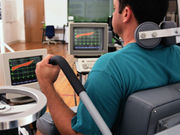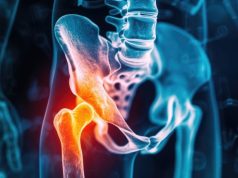Muscle MBF response to the OGC increased after resistance training, and glycemic control improved
FRIDAY, July 14, 2017 (HealthDay News) — Resistance training is associated with improvement in oral glucose challenge (OGC)-stimulated muscle microvascular blood flow (MBF) and glycemic control, according to a study published online July 7 in Diabetes Care.
Ryan D. Russell, Ph.D., from the University of Tasmania in Hobart, Australia, and colleagues assessed 17 sedentary patients with type 2 diabetes who underwent six weeks of whole-body RT. Before and after RT, clinical chemistries were measured in participants who fasted overnight, and then they underwent an OGC.
The researchers found that muscle MBF response to the OGC increased after RT, while there was no change in skin microvascular responses. Improved glycemic control accompanied these microvascular adaptations, as did increased lean body mass and reductions in fasting plasma triglyceride, total cholesterol, advanced glycation end products, and total body fat. There was a significant correlation for changes in muscle MBF response after RT with reductions in fasting blood glucose, hemoglobin A1c, and OGC area under the curve with adjustment for age, sex, percent body fat, and percent lean mass.
“RT improves OGC-stimulated muscle MBF and glycemic control concomitantly, suggesting that MBF plays a role in improved glycemic control from RT,” the authors write.
Abstract/Full Text (subscription or payment may be required)
Copyright © 2017 HealthDay. All rights reserved.








